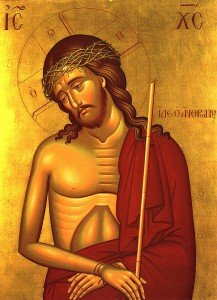 In the last issue of the article, I introduced the Eastern Church’s idea of Theoria with regard to the Bible. It basically states that the New Testament Scriptures are meant to draw us into a personal relationship with God through the Person of Jesus, the Christ. And although theoria demands that Scripture’s literal and historical meanings be respected, its foremost aim is to disclose the Bible’s spiritual meaning. For example, it would see Christ and His kingdom as the central message of both the Old and New Testaments. And if Christ the Messiah is indeed that revelation promised in the Old Testament, theoria maintains that the Old Testament could only be properly interpreted by those who have received this revelation (i.e., the Christian Church). Thus, according to the Eastern Christian, “the Old Testament no longer belonged to the Jews… [nor could anyone] any longer claim Moses and the prophets, if he was not with Jesus the Christ.
In the last issue of the article, I introduced the Eastern Church’s idea of Theoria with regard to the Bible. It basically states that the New Testament Scriptures are meant to draw us into a personal relationship with God through the Person of Jesus, the Christ. And although theoria demands that Scripture’s literal and historical meanings be respected, its foremost aim is to disclose the Bible’s spiritual meaning. For example, it would see Christ and His kingdom as the central message of both the Old and New Testaments. And if Christ the Messiah is indeed that revelation promised in the Old Testament, theoria maintains that the Old Testament could only be properly interpreted by those who have received this revelation (i.e., the Christian Church). Thus, according to the Eastern Christian, “the Old Testament no longer belonged to the Jews… [nor could anyone] any longer claim Moses and the prophets, if he was not with Jesus the Christ.
The literal meaning of Scripture alone can never achieve this spiritual end. If the Bible’s meaning were limited to what the Old Testament authors understood by their writings, many today would miss the Messianic significance of the Old Testament prophecies. Jesus, however, did not come primarily to “explain” the Old Testament to us but to fulfill it. And His fulfillment gives us an interpretative vision of the Old Covenant, teaching us not just the Bible’s “word for word” meaning, but the true spiritual meaning of the Word of God.
When for instance, we, in the Church, identify the Suffering Servant (in the book of Isaiah) as Christ the crucified, we do not simply “apply” an Old Testatment vision to a New Testament event: we detect the meaning of the vision itself, although this meaning surely couldn’t have been clearly identified in the time preceding Christ. Only the Church could unambiguously discern in the “type” of the “suffering servant” Christ, the Redeemer of men. In the Old Testament we had a “shadow” or image now, in the New Testament, we have the very fact and fulfillment.
These Old Testament types (the historic events, places, objects or people which point to Christ’s coming) were discerned by the Church as a “foretaste” of the New Covenant promise. The Body of Christ alone can interpret these types because, in Christ, she alone has literally experienced their fulfillment. Only those in Christ can understand the significance of these passages. Why? Because they relate to Christ – and to them as members of His body.
